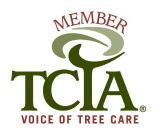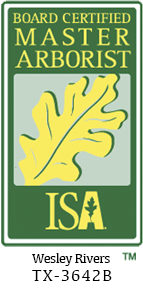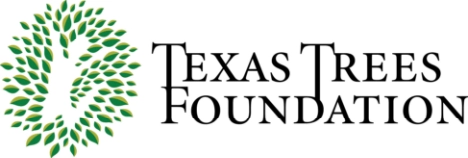How much does professional tree removal cost?
Pricing depends on tree size, location, and job complexity. Smaller tree removals may start around a few hundred dollars, while large or hazardous trees can run into the thousands. TreeNewal’s ISA certified arborists provide a detailed, no‑obligation quote after an on‑site inspection so you know the exact investment before any work begins.
Do I need a permit to remove a tree on my property?
Many cities and homeowners’ associations require permits for protected species or trees above a certain diameter. Our team stays current on local ordinances and can secure the paperwork for you. Let us handle the red tape so your project stays on schedule.
How do I know if a tree should be removed or can be saved?
Look for extensive trunk decay, major root damage, or a canopy leaning more than 15 degrees. In many cases, pruning, cabling, or targeted treatments revive a stressed tree. TreeNewal’s arborists perform a risk assessment and recommend removal only when recovery isn’t realistic.
How do I know if I am watering too much or too little?
Probe the soil two inches down; soggy soil with a sour smell or green algae signals overwatering. Dry, powdery soil plus wilted or scorched leaves points to underwatering. Adjust your schedule, then let TreeNewal set up a moisture‑monitoring program tailored to your soil and species.
Is my tree still alive after the freeze?
The 2021 deep freeze killed or weakened thousands of North Texas trees. To know if your tree is still alive, scratch a small twig. Green tissue means the tree still has life, while brown and brittle wood signals death. If you’re unsure, book a consultation. Our arborists can test cambium layers and plan next steps.
Why is my tree’s bark peeling?
Exfoliating species such as crape myrtles shed bark naturally as they grow. On other trees, peeling often flags freeze injury, fungal disease, or boring insects that disrupt sap flow. Early diagnosis from TreeNewal prevents deeper trunk damage and costly loss.
When is the best time of year to prune my trees?
Most shade trees respond best to pruning during dormancy, from late winter through early spring, because cuts heal faster and pests are less active. Flowering trees may need a post‑bloom trim to preserve next year’s buds. We schedule pruning by species so you enjoy strong structure and lush growth.
When is the best season to prune live oaks (or oaks in general)?
If oak wilt is active in your area, prune live and red oaks only from July through February to reduce infection risk. Post oaks and other resistant species tolerate year‑round trimming, but mid‑winter is still ideal. We always paint fresh oak cuts to block beetle‑borne spores.
Which season(s) should I fertilize my trees?
Modern slow‑release blends let us fertilize any time, yet winter feedings shine. Roots stay active underground and absorb nutrients long before spring pushes new leaves. A TreeNewal custom blend balances nitrogen, phosphorus, and micronutrients for your exact soil profile.
Do I need to be home for the arborist consultation?
Being present helps you share goals like shade, clearance, or curb appeal. Our arborist can walk the property with you, explain findings, and set priorities on the spot. If you can’t be there, we’ll still perform the assessment and send photos and a written plan.
How often should my trees be inspected by a certified arborist?
Mature landscape trees benefit from yearly checkups, while young or high‑value specimens may need seasonal visits. Regular inspections catch pests, nutrient gaps, and structural issues early. Consistent care saves money by preventing emergency removals and property damage.
What are common signs of oak wilt and how can TreeNewal help?
Sudden leaf drop, browning veins, and sap‑oozing cracks often point to oak wilt. The disease travels through root grafts and beetles, so quick action matters. We offer trenching, fungicide injections, and sanitation pruning to protect healthy oaks nearby.
Can TreeNewal help after a storm damages my trees?
Absolutely! Our storm damage cleanup crews remove broken limbs, correct leaners, and stabilize roots in one visit. We chip debris on‑site and haul it away, leaving your yard clean. Follow‑up pruning and fertilization encourage strong regrowth.
Will tree roots damage my foundation or plumbing?
Roots chase moisture along soil fissures; they rarely crack solid concrete but can exploit existing flaws. Proper species placement and controlled watering keep roots shallow and non‑invasive. If concerns arise, we map major roots and recommend barriers or relocation.
Is stump grinding necessary after tree removal?
A leftover stump invites termites, fungi, and trip hazards. Stump grinding eliminates those risks and frees space for new landscaping. Our low‑impact grinders finish below grade so you can lay sod or plant instantly.
What safety measures does TreeNewal follow during tree work?
Crews wear ANSI‑approved helmets, eye protection, and chainsaw pants. Rigging lines rated for thousands of pounds lower heavy limbs without dropping them. Every job includes a safety briefing and a certified arborist on site.
What eco‑friendly treatments does TreeNewal offer for pests and disease?
We favor horticultural oils, systemic bio‑pesticides, and beneficial nematodes before harsh chemicals. Soil health programs boost a tree’s own defenses, reducing spray frequency. An integrated pest management plan keeps your landscape and pollinators thriving.
How does deep root fertilization benefit my trees?
Pressurized injection places nutrients 8–12 inches down, right where feeder roots absorb them. This bypasses compacted topsoil and lawn competition. Expect greener leaves, stronger growth, and better drought tolerance within one growing season.
Can you plant a new tree where an old stump was removed?
Yes, but removing wood chips and adding fresh soil is essential to avoid nutrient tie‑up. We recommend planting slightly off center to access undisturbed ground. Our planting service includes species selection, soil preparation, and a two‑year health plan.
Does TreeNewal offer maintenance plans for ongoing tree care?
We do. Plans bundle pruning, fertilization, pest monitoring, and emergency support at a predictable monthly rate. It’s a hassle‑free way to keep your trees healthy and your budget steady. Ask us to craft one for your property.
